FASHION
In a world turned upside down, wear garments that are comfortable, simple and well cut
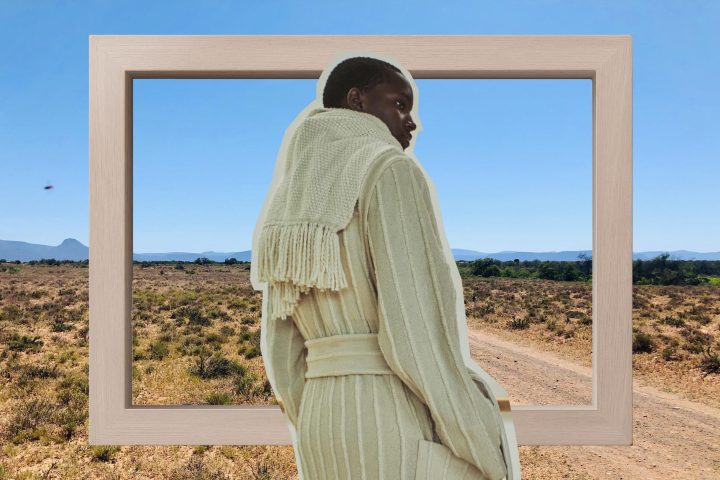
At the office in your home? Need something striking but comfortable to wear for a Zoom party? Stylish simplicity might be the solution.
Back in the Eighties, the office – an intricate ecosystem of hierarchies and ladder to climb at the force of one’s ambition – was where life happened: friendships, enemies, love stories, backstabbing, successes, hopes, crushed dreams squeezed between 8am and 5pm and after work drinks.
Workwear mimicked our ambitions; and the 1988 Mike Nichols’ movie Working Girl with Melanie Griffith and Sigourney Weaver outlined the Eighties’ office style: permed, cropped, curled press, or heavily sprayed hair; shirts and blazers with exaggerated epaulettes, pencil skirts or high waisted pantsuits in mixed patterns and bright colours, worn with stilettos, and topped with glittery eyeshadow and a touch of lipstick; men dressed in grey suits with white shirts, turtlenecks or polo shirts (for a Friday) mirroring what had been en vogue circa 1960 on Madison Avenue.
Now, four decades and a pandemic later, the office has morphed into something more linear, mobile and homier made of virtual Zoom calls, and banter chitchats, “brainstorm or rampage” shared through video games; and our desks are now hugged between the bed and a Monstera deliciosas plant, only one step away from the kitchen.
It is no surprise then, that office attire has also transformed: from corporate outfits that embodied a certain idea of power and professionalism, we’ve moved towards simpler styles and understated elegance.
Yet, understated doesn’t mean neglected, quite the contrary; there is an art to stylish simplicity and the ability to create simple silhouettes that are superb, unique and even opulent, is one to celebrate – especially when it is tied with local craftsmanship. Those garments are also versatile – they wouldn’t need to be for the office only and instead, can be worn day and night because the craft and detailing behind each piece turns clothing into some art-de-vivre.
Talking about art-de-vivre and artisanship, the ability to extract luxury and sensuality from simple designs is central to Lukhanyo Mdingi’s creative work. His eponymous brand has always been anchored in intelligent and luxurious designs, and pieces “that are steady, solid and strong”. His ‘Perennial’ Autumn/ Winter 2019 collection was an ode to simplicity made sumptuous: one cannot but fall in love with the perfect tailoring of a revisited Mao jacket in raw silk; or the brushed ivory knit in kid angora and mohair; or a rusty burnt orange trench in a blend of angora, mohair and merino wool.
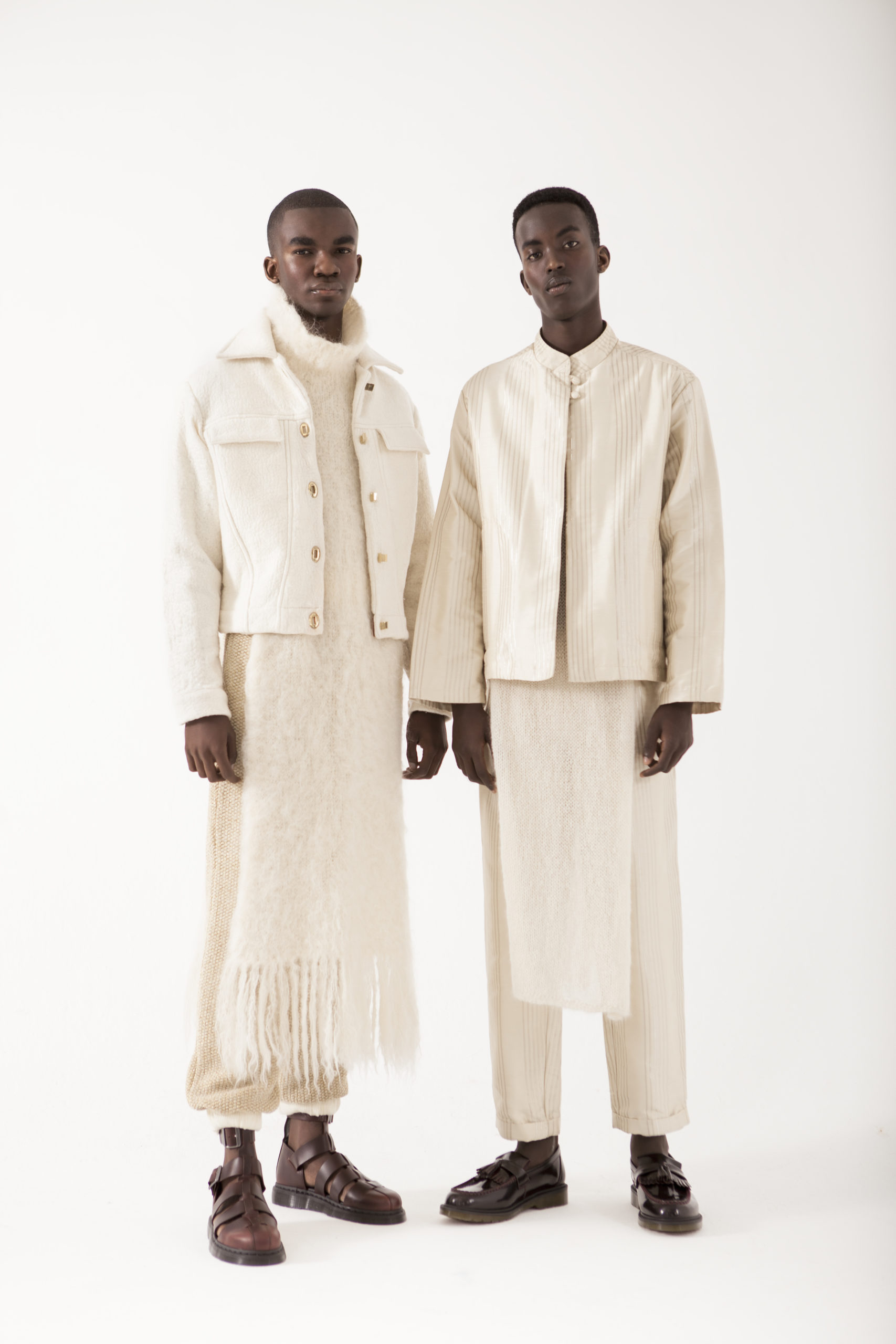
Lukhanyo Mdingi Perennial Collection Autumn/ Winter 2019

Lukhanyo Mdingi Perennial Collection Autumn/ Winter 2019

Lukhanyo Mdingi Perennial Collection Autumn/ Winter 2019
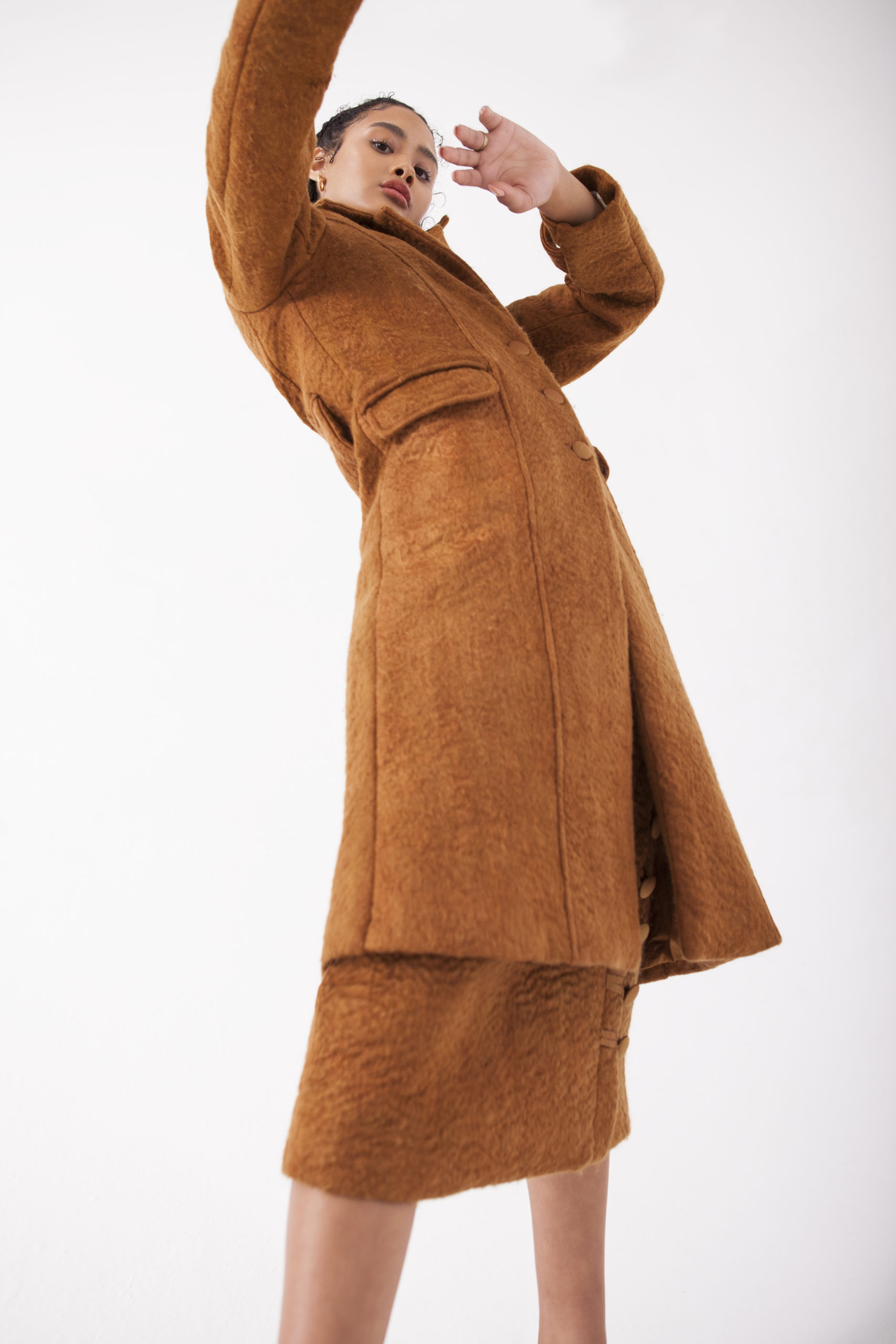
Lukhanyo Mdingi Perennial Collection Autumn/ Winter 2019

Lukhanyo Mdingi Perennial Collection Autumn/ Winter 2019

Lukhanyo Mdingi Perennial Collection Autumn/ Winter 2019
Wondering where you’d wear it all? Anywhere – the beauty of natural fabrics paired with minimalist lines means that it’s as comfortable (the softness of mohair turns winter into delight) seating at your desk than it would be at a party – when parties will be in vogue again.
For more choices, Mdingi’s Essentials label offers ensembles in linen, simple and powerful cuts, like the woven vest paired with matching ‘paperbag’ pants belted at the waist. The beauty lies in the details of a square flat buckle or a double breasted jacket with three rows of round buttons. It’s luxury indeed, but wearable, comfortable and desirable.
East London-born Luke Radloff worked for 14 years in the fashion industry in Europe, with a stint at the Italian brand Marni before moving back to South Africa to start his own brand: UNI FORM.
On launching his business, he remembers how difficult it was initially to create a model that would be sustainable and commercially viable. “At the beginning, I was nervous just to even create an Instagram account and post the first image… Creating a sustainable business model that ensures the future of the brand was the main challenge. Educating local consumers on what sustainable luxury clothing looks like, feels like and truly costs, is also a constant exercise,” he explains.
Working alone with his tailor, Radloff creates timeless pieces that are beautifully crafted. His Autumn/ Winter 2020 collection is made of contemporary “wardrobe staples”. The hand-woven cotton coat with exaggerated “slub” line detail and large pockets, that was “specially developed by master hand weavers in the Karoo” is chic, belted with a single loose sash in the same fabric, and could be worn on its own as a robe or thrown over as an elegant inter-seasonal coat; the boxy, cropped jacket in wool with wide sleeves has a removable scarf, perfect for indoor-outdoor working wear. Pair them with high-waisted, slightly cropped trousers in corduroy with curved side seam and you have a comfortable and stunning outfit for the day.
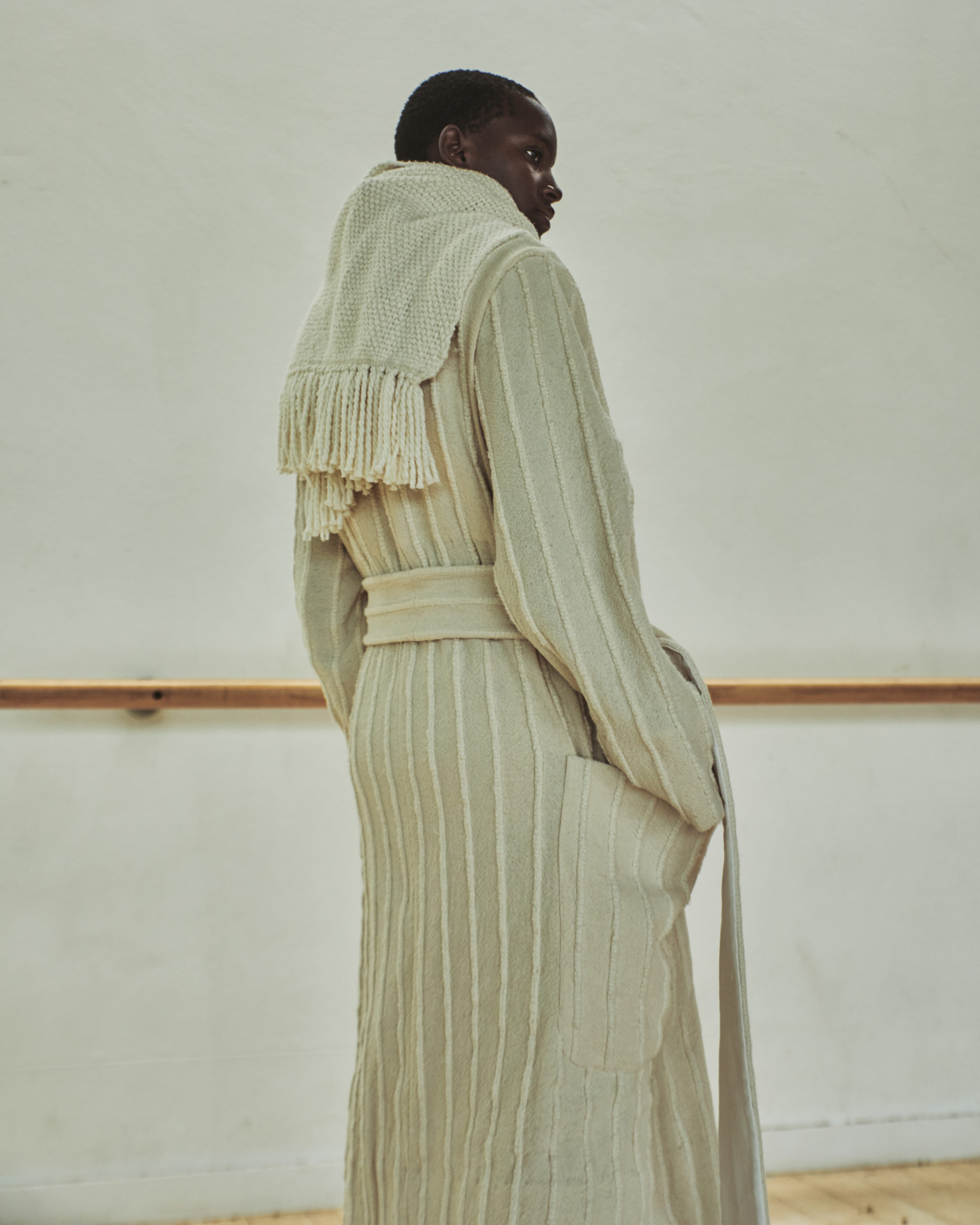
UNI FORM Autumn/ Winter 2020
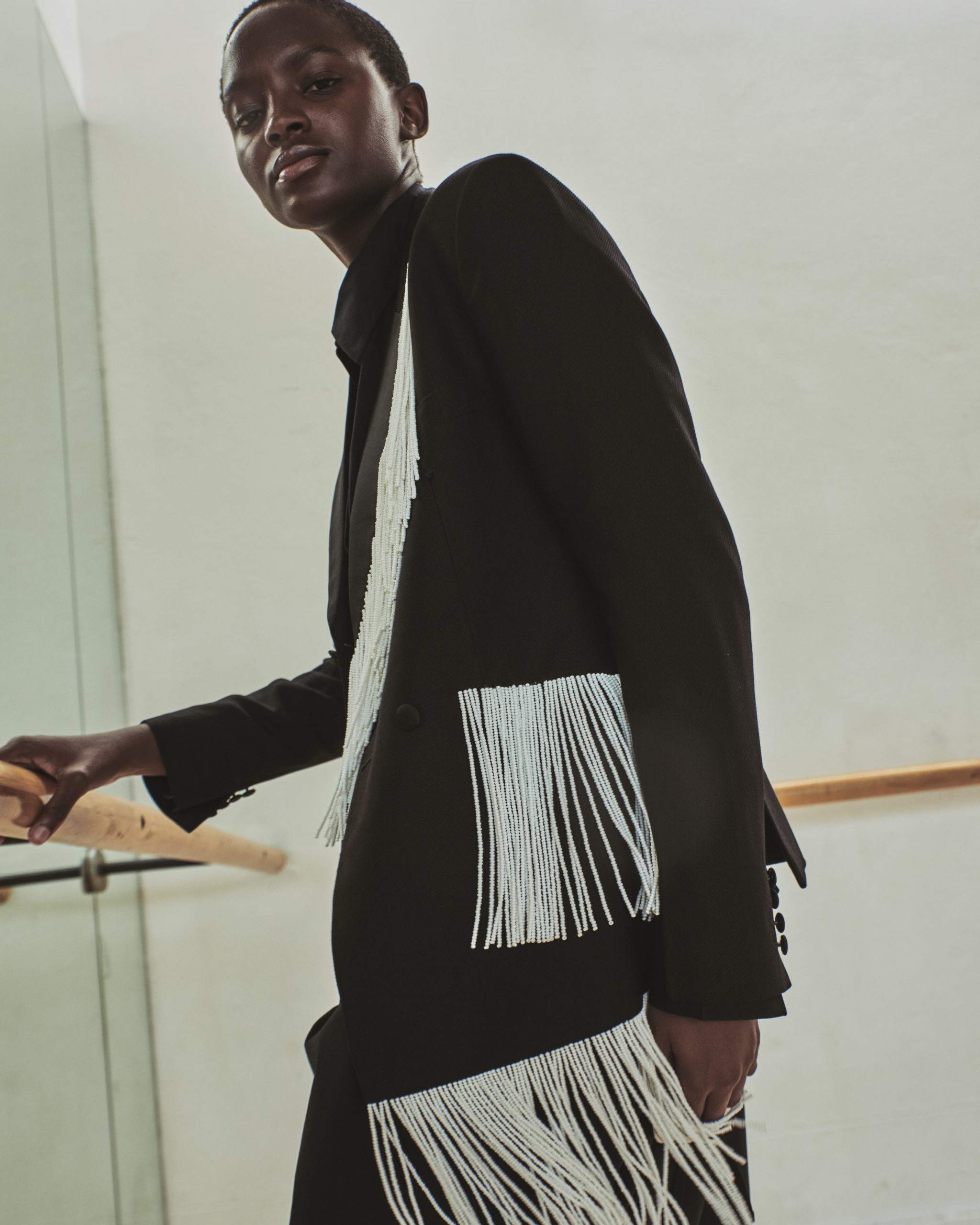
UNI FORM Autumn/ Winter 2020
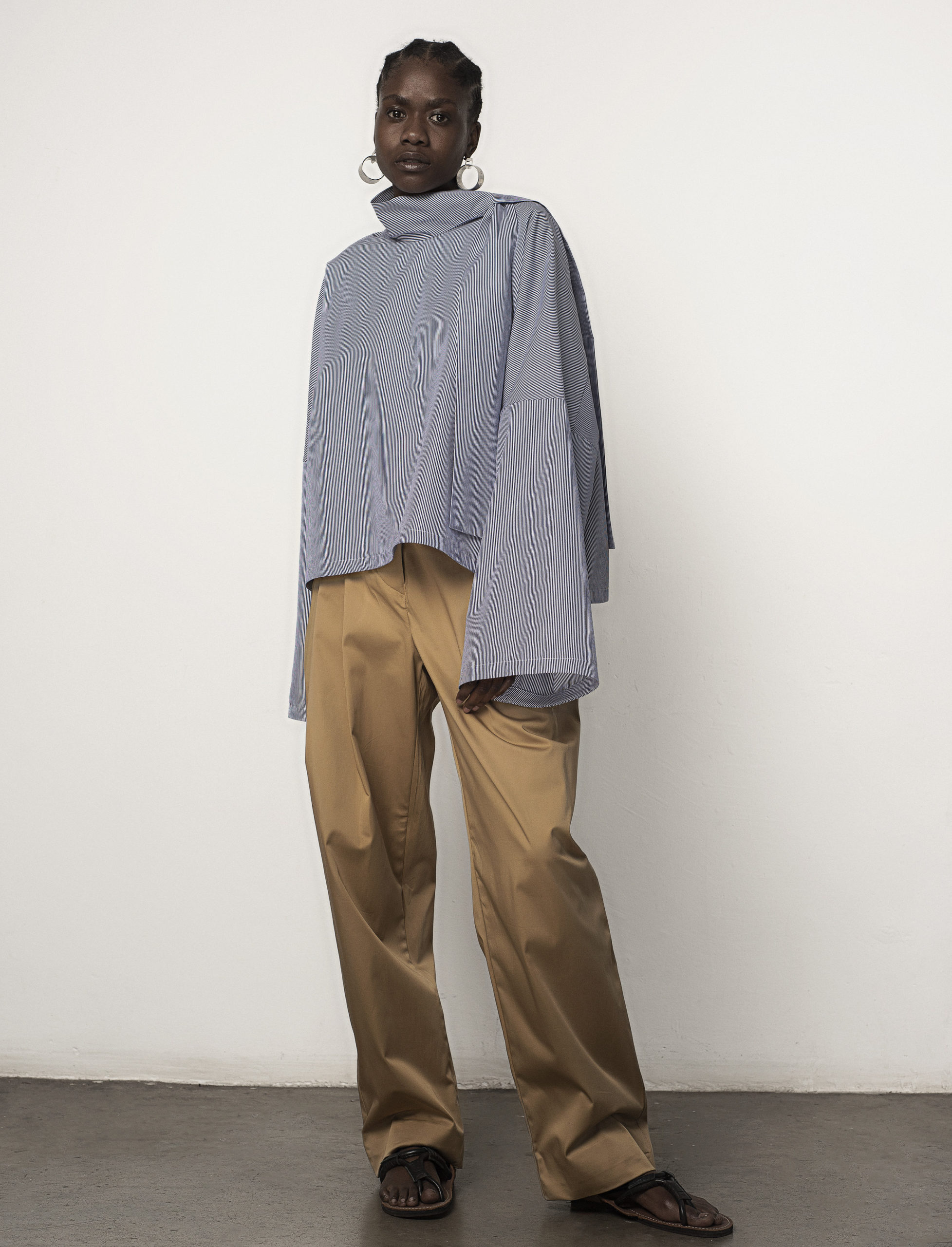
UNI FORM Autumn/ Winter 2020
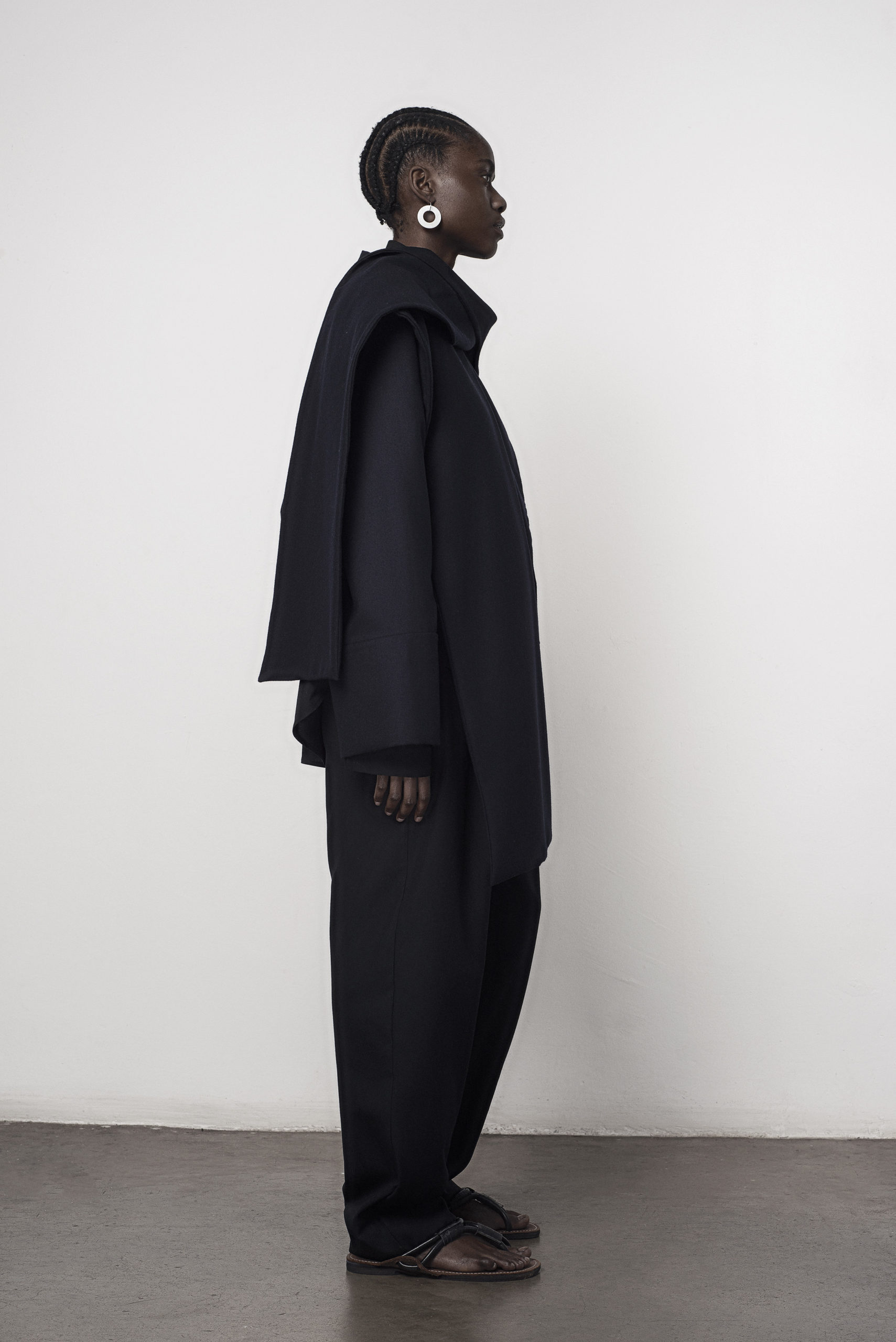
UNI FORM Autumn/ Winter 2020

UNI FORM Autumn/ Winter 2020
The importance of fabrics and handcraft is at the core of both Mdingi and Radloff’s work and in general, it is something that is often fundamental to young and emerging creatives in South Africa: working with local beaders, weavers, craftsmen and women and celebrating the incredible artisanship of our country.
“It’s becoming more obvious to me every day how important handcraft is, not only in redefining luxury but also in sustaining traditions that are hundreds of years old. Handcraft is not only luxurious, it is pivotal to the future of this industry if we truly want to slow down and address the toxicity caused by mass ‘fast-fashion’. Handcraft is such a simple way to improve environmental and social sustainability and we live in a place that is so rich with craft, we need to celebrate it more urgently,” says Radloff.
But he also points out that “handcraft, for instance, takes 10 times as long as a machine in a factory would, and yields 10 times less output; but what could be more luxurious than slowing down our processes and trying to tackle the climate crisis at the same time? One beautifully crafted item that takes weeks to create in a small community by a master artisan vs 100 trendy items from a fast-fashion retailer is what could save our environment”.
On the topic of sustainability, the designer is working on a model “whereby customers can give their old UNI FORM pieces back for a certain amount of credit in order to recycle the fabric rather than it ending up in a landfill”.
In times of change, taking the time to reflect before we shift the way we work, act or consume is important – and supporting local businesses as well as buying lasting pieces from South African designers and creatives who are working with local artisans and celebrating traditions should be part of a move towards better, more conscious consumption. Especially as the pandemic has put an already fragile local fashion ecosystem under huge strain. DM/ ML
To get in touch with Luke Radloff, check his @uniformza account on Instagram, go to www.uniformza.com or email [email protected] for more information.
For more about Lukhanyo Mdingi’s collections, check his website as well as his Instagram page.

















 Become an Insider
Become an Insider